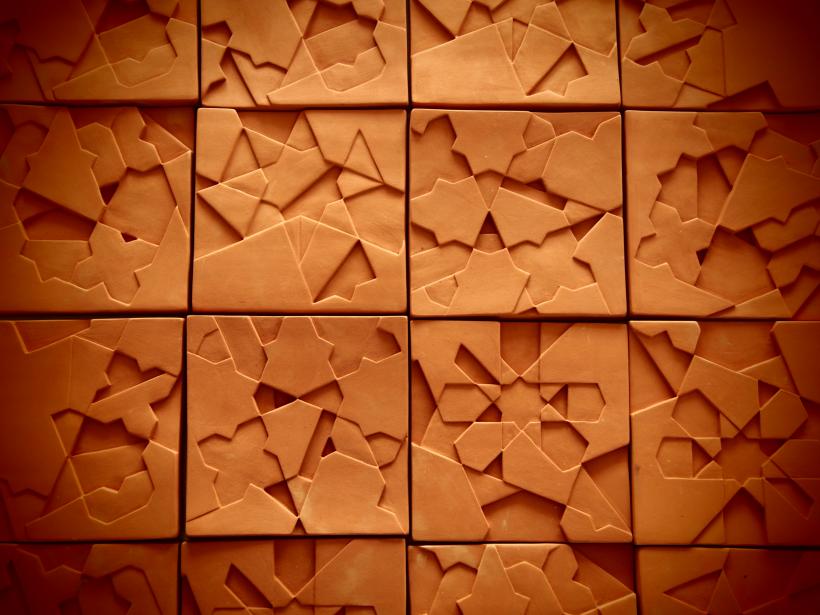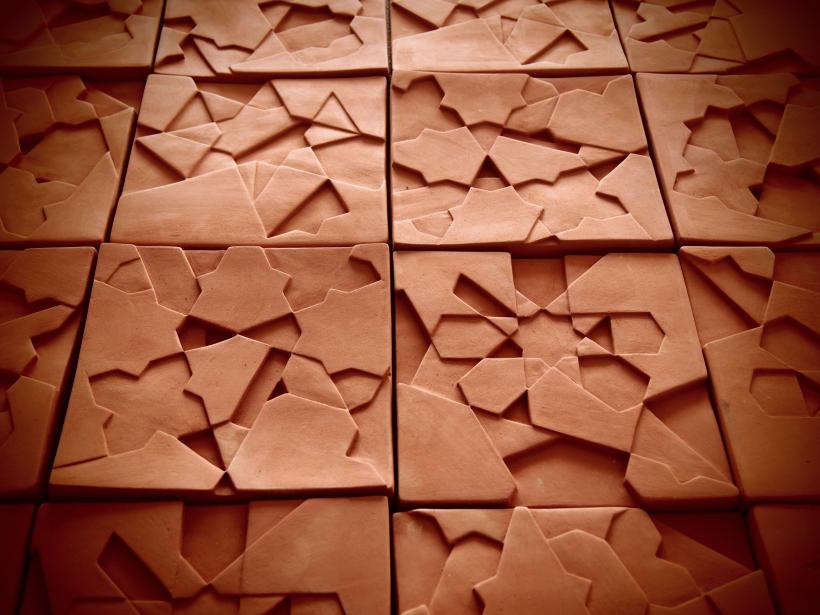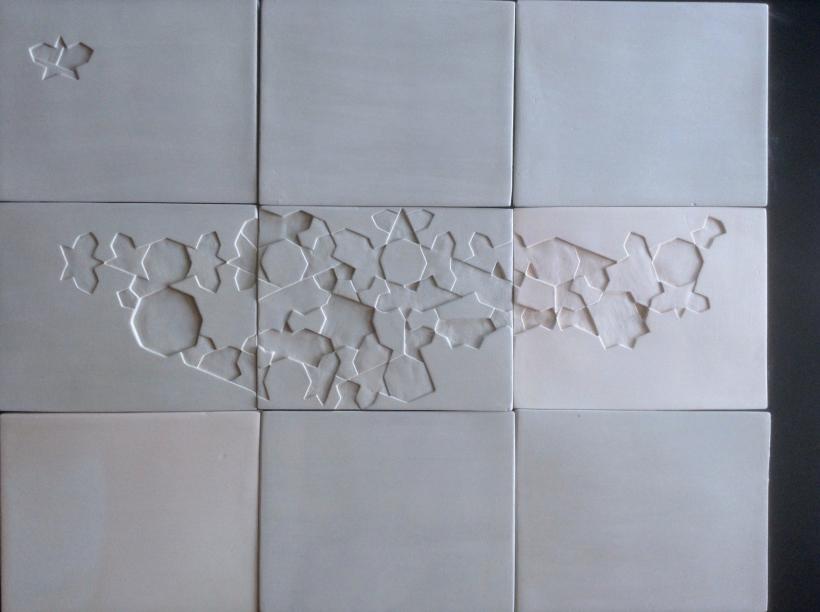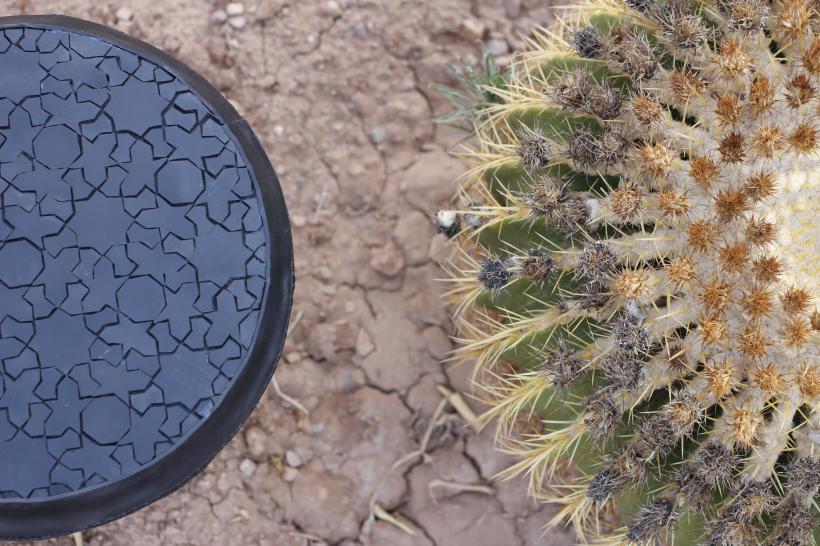Sara Ouhaddou’s residency at the International Studio and Curatorial Program (ISCP) in New York has been an incubator for growth. Instigated by a collaboration between the Jameel Foundation, Edge of Arabia, and ISCP, her three-month stay in New York has provided adequate distance from her homeland and inspiration to distill abstraction from her study of Islamic geometry in her native Morocco.
During a recent visit to her brightly lit studio at the ISCP, the young artist pointed to a series of minimalist mosaic patterns that had been transferred onto paper by rubbing alcohol on stencilled shapes. Referring to the “DNA of Islamic pattern” Ouhaddou discussed her interest in creating her own “alphabet and syntax,” by extracting abstract patterns, and devising a three dimensional perspective from the traditional two-dimensional aspect of Islamic design. Her stencilled drawings are the first steps towards realising the same patterns in glass, which at the time of my visit, she had just begun to explore with glassmakers in Brooklyn, New York, where the studio is based.
Ouhaddou’s passion for reviving Islamic pattern is palpable. She gesticulated animatedly as she described her rejuvenation of fading Moroccan crafts in 2011. While working with artisans in the southern towns of the Ourika Valley near the capital city of Marrakesh, she motivated them to continue the tradition of making tiles, but from local clay instead of using imported clay from Spain. Made over a six-week period that included the process of kneading the clay to the right consistency, each new series of earthen tiles incorporates the mosaic tradition of Spanish and Arabic roots with Ouhaddou’s innovative modernist additions garnered from her training and education in France. Her “global DNA,” as she terms it, enables the commingling of custom with layering and sculpting such that the final product uses depth to create three-dimensional angles in the conventional flat two-dimensional surfaces of tiles from the region.
Ouhaddou played a video clip of her subsequent program. By bringing new materials and methodologies to dying ancient practices, she spurred a group of conservative young female students at the Dar Sanaa School in the northern Moroccan town of Tetouan to develop unusual embroidery techniques. Here Ouhaddou replaced traditional silk fabric used for conventional embroidery and clothing with scraps of recycled rubber. The young students were encouraged to utilise sewing machines, normally used to make jeans, to embroider traditional Andalusian designs with its historic roots in Spain onto rubber. Through this new technique, a fledgling industry of embroidered rubber stools and other utilitarian objects was born.
And yet, Ouhaddou’s fascination with linking traditional canons with modernity lies in exploring the paradox of perfection. By continually re-examining the perfection and symmetry of Islamic mosaic, Ouhaddou tries “to find a new language” that breaks with tradition and incorporates the imperfection of combining unique materials and hand made techniques. The challenge of bringing together unusual, often asymmetrical ideas and tactics has become the driving force of her work.
Her experience in New York has brought greater clarity to her purpose and given her impetus to experiment. Ouhaddou’s focus on the use of glass to make three-dimensional abstract objects is not commonplace in Morocco. But pursuing her idea to work with glassmakers in New York has not been easy. Faced yet again with the challenge of convincing a new set of artisans has only strengthened her belief in the power of interaction. “It’s all about being Moroccan,” she says gleefully.












